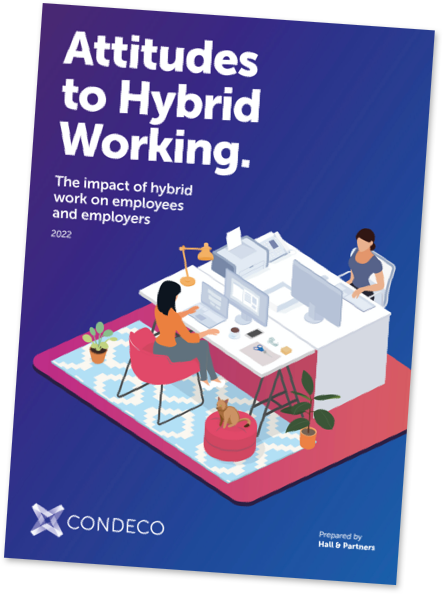
In the last four years, there has been much buzz around newly emerged working methods. Hybrid and flexible work have become a new standard for numerous office workers.
Data from a 2023 Gallup report found that 5 in 10 workers have moved from remote work to the hybrid model. While remote work was appealing initially, many workers find the hybrid model helps them better manage their work-life balance. It reduces commuting expenses, helps with childcare, and creates a more dynamic weekly working environment with an emphasis on flexibility. In 2024, most organizations offer the hybrid model to accommodate employees. But what about the flexible working model?
Hybrid and flexible working models are different, but both are beneficial
Laura Rasmussen, a senior manager of talent and organization strategy at Accenture, discusses the benefits her clients realize when they implement hybrid and flexible work models. She quotes one of her customers who retained employees:
“As a single mom, I was thinking of leaving the company due to the inflexible hours and impractical ways of working. But now, I have decided to stay because of the hybrid work movement that the company has started.”
Employees crave in-person collaboration but on their own terms. The new reality is that few want to be in an office full-time. However, a new pattern has emerged, which we tracked in Eptura’s 2023 Workplace Predictions Report. We call it the mid-week mountain, where employees return to the office between Tuesdays and Thursdays. Employees no longer desire to commute into the office on Mondays or Fridays.
Our personal and professional lives have become more agile. It’s no longer about being in the office on specific days or even working specific hours.
The problem is that hybrid work and flexible work are often confused as the same model, but nothing could be further from the truth. They are two distinctly different concepts. Understanding what sets them apart is critical for your business strategy. It will help your company establish the right work model for the best employee engagement in the long term.
Let’s clarify the key differences between hybrid and flexible work and explore what to consider when deciding which is best for you.
Hybrid work is fixed by employers
Hybrid work is where employees work a combination of the office and their home to still – where appropriate – enjoy the benefits of the remote model they enjoyed during the pandemic days.
Interestingly, our data found that 24% of people working fully remotely want to switch to a hybrid working model. There are a number of reasons for this, but one trend that we’ve been tracking is work-from-home loneliness.
Ordinarily, the hybrid work model is fixed. For example, a payroll team might work from the office on Mondays, Wednesdays, and Fridays, while the HR team may be designated Tuesdays and Thursdays. In such an example, these two departments can share one set of workstations and meeting rooms, meaning that – assuming the departments are the same size – the workspace demand can be halved.
However, hybrid work is not without its compromises. First, the lack of flexibility in the arrangements may not suit the work-life balance of employees who have specific pressing demands at home or those who don’t have a suitable home working environment and would prefer to work in the office full-time. Additionally, when different teams or team members aren’t necessarily in the office at the same time, collaboration is more difficult to arrange and execute.
Flexible work is in the employee hands
In a flexible work model, that power is in the employees’ hands. Each employee can decide where and when they want to work, as long as it is within reasonable operational parameters of the business. What’s more, they don’t have to commit to the same week-by-week schedule: they can decide to work from the office whenever they want to or whenever they feel they need to collaborate with co-workers in person.
Worktech takes the complexity out of flexible work, ensuring desks aren’t double booked and office space is consistently manageable. Such tools make flexible work a seamless and efficient process.
How, exactly? Employees book the workspaces they need in the office in advance for precisely their needed times. Additionally, employees can view each other’s schedules and locations to easily organize physical, virtual, or combined meetings.
Which working style is better?
To understand which model makes more sense for your organization, consider the following key factors:
- Context: Every business and workforce is different, so this decision must consider those specific needs. You should already be taking steps to collect this information, and employees should be proactive about supplying it if they aren’t already.
- Collaboration: The need to connect with co-workers in teams and departments and whether virtual meetings are sufficient should also influence how flexible your working model is.
- Choice: Employees given more autonomy tend to feel more valued by their employers and, therefore, happier and more productive in their work. Giving each employee as much freedom as possible can deliver huge benefits.
Both hybrid work and flexible work are beneficial. Ultimately, the best choice depends on your unique company’s goals and employees.
Hybrid and flexible work require reliable and fast collaboration software
We can’t always be together in an office and collaborate in person anymore. Even in 2024, this is still a reality.
So, what does that mean for your organization? You need collaborative technology on one platform that synchronizes work across various devices and locations. Without mobility and cloud synchronization, there’s no flexibility in the workplace. The right worktech allows your company workflows to remain successful wherever you and your employees are, no matter what laptops or smartphones are used.
The same is true for desk booking or meeting room booking.
Desk and meeting room booking lets teams and managers see when co-workers plan to be in the office. They can easily schedule a personal desk space or book a room for an in-person meeting directly from one platform.
Employees can find and reserve the spaces needed efficiently and ensure the office and desks are ready for arrival. It’s flexible working without the hassle.
Learn how Eptura (formerly Condeco) can help you reach your full potential today.



